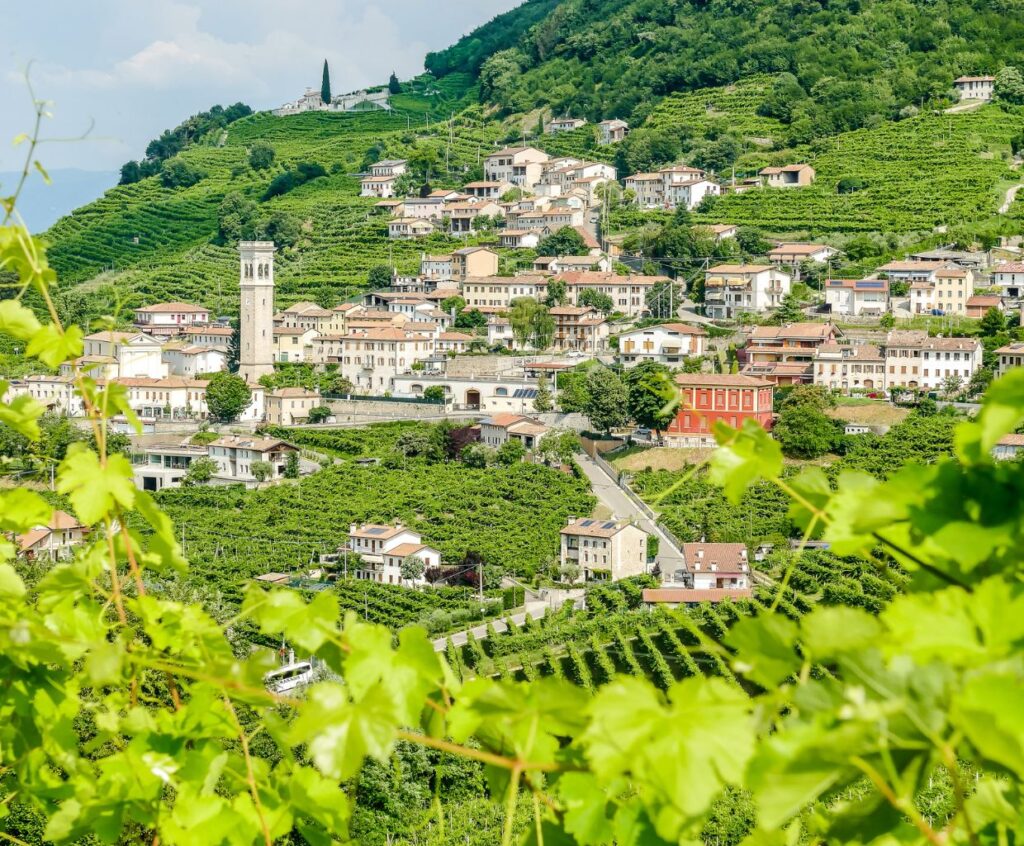Exploring Prosecco: Origins and Production Regions
Welcome to Prosecco, the sparkling wine that has recently gained immense popularity. Prosecco originates from Italy and is renowned for its refreshing and vibrant nature, making it a perfect beverage for celebrations and casual gatherings.
Origins
Prosecco’s history can be traced back to the Veneto region in northeastern Italy. The wine is named after the village of Prosecco, located near Trieste, which is believed to have produced this delightful bubbly since ancient times.
Historically, Prosecco was made using the Glera grape variety, which is indigenous to the region. Over the years, it has evolved and gained international recognition for its unique taste and enthusiasm.
Exploring Prosecco Production Regions
Today, Prosecco is produced in different regions of Italy, but the majority still comes from the Veneto region, particularly the provinces of Treviso and Trieste. The hilly landscape and favorable climate in these areas create optimal conditions for grape cultivation.
The Conegliano Valdobbiadene area, located in the heart of the Prosecco production zone, is known for producing some of the finest Prosecco wines. The region’s unique microclimate, with its cool nights and warm days, contributes to developing grapes with balanced acidity and intense aromas.
Types of Prosecc0
Prosecco is available in different styles, each offering a distinct taste experience. The most common types include:
-
- Prosecco DOC: This is the most widely available Prosecco, characterized by its fresh and fruity flavors. It is typically produced using the Charmat method, where the secondary fermentation occurs in large stainless steel tanks.
-
- Prosecco Superiore DOCG: This is the premium category of Prosecco, originating from the Conegliano Valdobbiadene region. It undergoes stricter production regulations and is often considered more refined and complex.
-
- Prosecco Rosé: A relatively recent addition to the Prosecco family, this style incorporates red grape varieties. It offers a delicate pink hue and a vibrant, fruity profile.
Whether you prefer a crisp and refreshing Prosecco DOC or a more nuanced Prosecco Superiore DOCG, exploring the various styles and production regions can be a delightful journey for wine enthusiasts.
How does the production regions’ terroir influence Prosecco’s quality and uniqueness?
The terroir of the production regions plays a crucial role in influencing the quality and uniqueness of Prosecco. Terroir refers to the combination of factors such as climate, soil composition, topography, and viticultural practices that contribute to the distinct characteristics of a wine.
1. Climate: The climate of the Prosecco production regions, particularly the Conegliano Valdobbiadene and Asolo DOCG areas in northeastern Italy, is favorable for grape cultivation. The regions experience a mild climate with cool winters and warm summers, providing ideal conditions for the growth and ripening of the Glera grapes used in Prosecco production. The moderate temperature range helps retain acidity and develop delicate flavors in the grapes, resulting in high-quality Prosecco.
2. Soil Composition: The soils in the Prosecco production regions are diverse and contribute to the unique characteristics of the wine. The Conegliano Valdobbiadene area has a mix of clay, marl, and sandstone soils, while the Asolo area has volcanic soils. These different soil types influence the mineral content and water retention capabilities, which, in turn, affect the flavor profile of the grapes. For example, volcanic soils can impart a distinct minerality to Prosecco, enhancing its complexity.
3. Topography: The hilly landscapes of the Prosecco production regions significantly impact the quality of the wine. The hillsides provide excellent sun exposure and drainage, promoting even ripening of the grapes and minimizing disease pressure. The steep slopes also force the vines to work harder, resulting in lower yields but higher concentrations of flavors in the grapes. This unique topography contributes to the overall quality and complexity of Prosecco.
4. Viticultural Practices: The traditional viticultural practices followed in the Prosecco production regions also contribute to the uniqueness of the wine. The vineyards are often terraced on the hillsides, allowing for better vine management and optimal sun exposure. Additionally, traditional cultivation techniques, such as hand harvesting, selective pruning, and low-intervention winemaking, ensure that only the highest quality grapes are used in Prosecco production.
Overall, the combination of climatic conditions, diverse soils, unique topography, and traditional viticultural practices in the Prosecco production regions creates a terroir essential for producing high-quality and distinctive Prosecco wines. These factors contribute to the wine’s balance, aromas, flavors, and overall character, making Prosecco a unique and sought-after sparkling wine worldwide.
Are there any specific regulations or certifications associated with Prosecco production regions?
Yes, there are specific regulations and certifications associated with Prosecco production regions. Prosecco is a protected designation of origin (PDO) wine, meaning it can only be produced in some areas of northeastern Italy. The two central regions for Prosecco production are Veneto and Friuli Venezia Giulia.
The regulations specify the grape varieties used in Prosecco production, primarily Glera, and smaller amounts of other local varieties such as Verdiso, Perera, and Bianchetta Trevigiana. The production methods, including vineyard practices and winemaking techniques, are also regulated to ensure the quality and authenticity of Prosecco.
In addition to the PDO designation, Prosecco can also have a specific quality designation known as Prosecco Superiore. This is further divided into two sub-regions: Conegliano Valdobbiadene and Asolo. Prosecco Superiore is produced in the hillside vineyards of these sub-regions, considered the highest quality areas for Prosecco production.
Prosecco producers must undergo certification processes and inspections by the relevant authorities to ensure compliance with these regulations. This helps maintain the integrity of Prosecco as a regional specialty and guarantees its quality to consumers.




